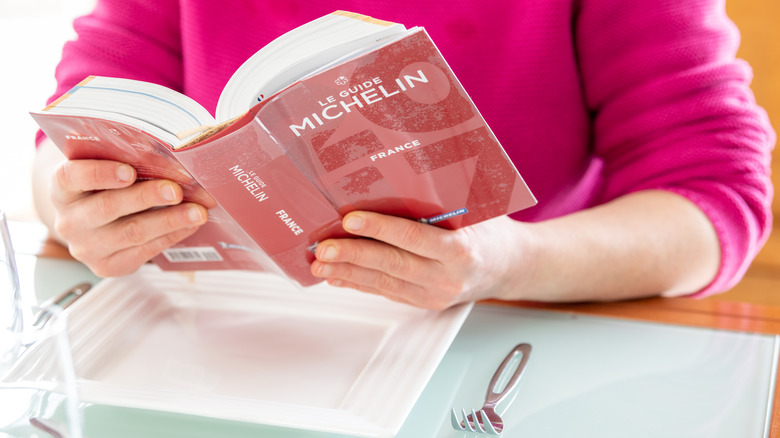Being A Michelin Inspector Is Exactly As Glamorous As It Seems
In 1889, French industrialists and brothers André and Édouard Michelin put out a little red guidebook to encourage travelers to hit the road with the cars and tires they sold at their eponymous company (per Michelin Guide). In 1926, the frequently-updated guide gave way to a new feature: A rating system that awarded a single star to French restaurants that represented a "fine-dining" experience. By 1936, the system was refined with a new set of criteria, which was based on a scale between zero and three stars. Today, restaurants around the world vie not only for the approval of customers, but also for the prestigious guide, whose attention denotes a mastery of cuisine.
Who are the gatekeepers of these coveted stars, you ask? An international class of thoroughly trained anonymous inspectors. Far from the arrogant Anton Ego, the fictional "Ratatouille" restaurant critic with the power to shutter a restaurant with a wave of his hand, Michelin inspectors are wrapped up in anything but self-image. "We want to validate the same experience that any other diner will have in the restaurant so that we can provide a trusted opinion for our readers," an unnamed inspector told Forbes. If that sounds like a dream gig, it's because it just may be. Here's a look at a day in the life of those responsible for one of the world's most sought-after culinary accolades.
A life of food and travel
As a Michelin inspector, you're sharing the duty of evaluating restaurants based on five pieces of criteria: quality of ingredients, mastery of flavor and technique, chef charisma and signature, value for money, and consistency over time. An average inspector might eat up to 10 meals a week and travel up to three weeks a month, per Forbes, but half the fun is the research that comes beforehand. "There is no greater joy for an inspector than to find the right restaurant at the right time," one assessor told Michelin Guide.
Once it's time to get down to business, an inspector's average day on the job will comprise two "meal assessments" for lunch and dinner, which are written up and promptly discussed with fellow inspectors and editorial teams in an office. This way, rather than leaving the reputation of a restaurant up to a single inspector à la Anton Ego, selections are evaluated through a "collegial" process that takes into account the opinions of a diverse group of inspectors from around the world, per Forbes. If you're not a fan of research, frequent travel, multiple courses, dining solo, or thinking critically about food, it's safe to say the life of a Michelin inspector is not for you.
So, you want to be a Michelin inspector
As you might guess, the vetting process for Michelin inspector candidates is quite rigorous. That said, anyone can shoot their shot on a rolling basis. The application requires, at minimum, five years of relevant experience; a thorough grasp of restaurant news; and a deep knowledge and passion for the "ingredients, culinary techniques, cuisines and culinary fundamentals" of international cuisines.
The Michelin Guide website is a good place to go for features on inspectors' whereabouts. A roundup of "field notes," for instance, shows Instagram highlights of an inspector's favorite recent dishes, including heirloom tomato concassé from LA's Animal Restaurant (which enjoys a Bib Gourmand rating in the guide) and the beloved congee from New York's Congee Village (another Bib Gourmand pick that shows up on the guide's roundup of NYC's best Cantonese eateries).
While the life of a Michelin inspector comes with a bounty of perks, it's worth noting that it's not without its drawbacks. As one inspector put it, the traveling that goes along with the job requires some "family and personal sacrifices." On the other hand, the loved ones of inspectors get to benefit from some delicious souvenirs.


